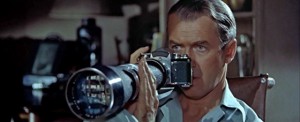PB 4
EXEGESIS summary-
Series of Audio-Visual Horror Subgenre Sketches.
Our final project was to do a final and longer sketch that curates a reflection to the ideas that I have been exploring throughout the semester. My research question was “are genre just tropes?” and I’ve found that what makes a genre is not only a grouping of tropes and patterns but also the aesthetics, mood and cinematic experience of emotions within a text. While I have taken upon further research for a wider exploration, we were encouraged to find inspirations for our sketch. The focal point that has been reflected upon my genre trajectory is the inception of genre boundaries that are sometimes taken too seriously into a strict classification of films according to the set-rules that cause the limitation and lack of creativity. This idea is explored by Ishiguro in 2015. Hanich (2010) in the other hand specialised in the idea that the categories we form are part of our experience. For example, horror branches out in a couple of different subgenres including the slasher, thriller, vampires and the supernatural and we can usually tell the difference through the tropes present. I’ve learned that these subcategories are all able to generate the lived bodily experience and fearful emotions including terror, shock, dread and horror. In a nutshell, tropes equal genre which equals emotions. So there comes the second part of my question, can film still be considered a particular genre if its key tropes are removed? My series of three horror-subgenre sketches (which may as well be considered as meta-horror) that includes slasher, vampire and supernatural horror will be the experiment of this study.
Within my three chosen horror sub-genres are tropes and conventions that operate to portray the aesthetics of fear. I had removed each of their key tropes to prove that they are still its genres without sticking to the set-rules. Jackson (2013) defines metahorror as films that self-consciously refer to their own construction and do not break through the fourth wall completely. What I’ve received from Jackson’s ideas are inspirations of metahorror that helped my sketches. So my idea was to omit fangs in Vampire sketch, the presence of knife in my slasher sketch and finally the phenomenon of evil and harmful personality of a ghost in the supernatural sketch.
Although the vampire sketch presents itself as a typical gothic romanticism with its warm hues of the shots, blood and preying subjects, it omits the presence of fangs on any shots.
https://vimeo.com/199307120%20
Likewise, the slasher sketch omits and replace knifes, saws or any weapons to a single red marker that does not in any way look harmful or even bloody. This sketch however, uses fast cutting shots and jump cuts in hand-held movements after longer moments of suspense with perspective and establishing shots.
https://vimeo.com/199303539%20
Finally, the supernatural sketches utilises dark, cold monochromatic tones with unsettling dread and terror background music along with shock tactic especially whereabouts in moments of creepy silence. In addition, the ghost is scary with an all distorted white mask and always appear suddenly except that she is cheeky and comedic unlike the typical dangerous villains of horror.












